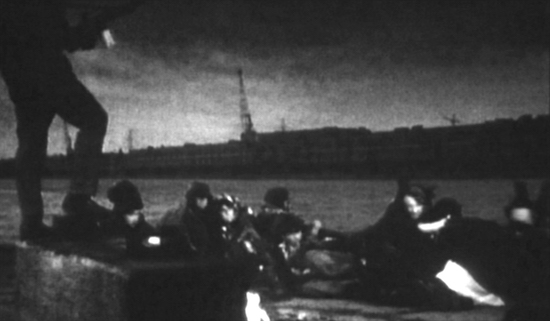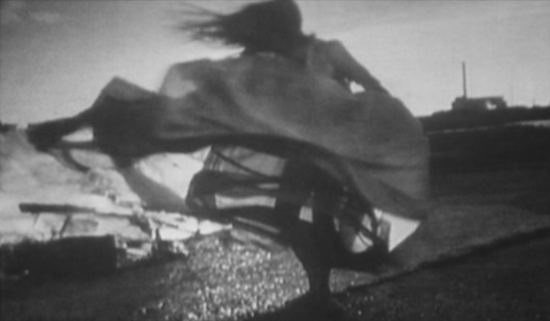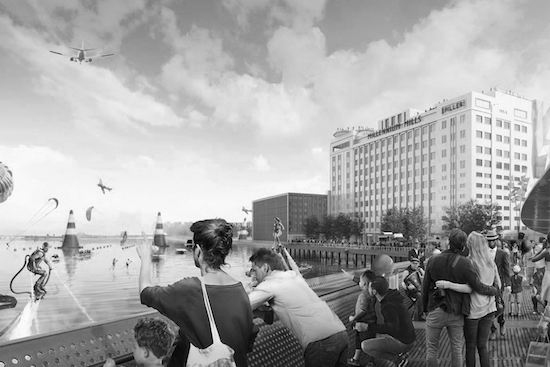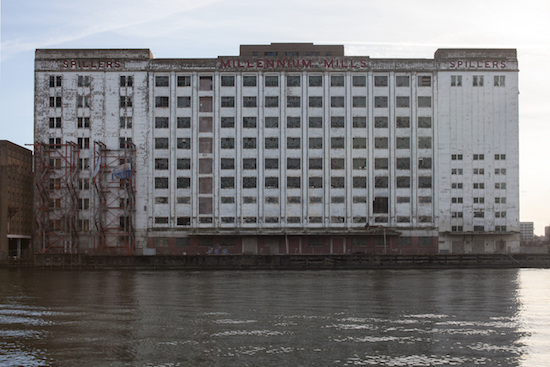Fig. 1: Millennium Mills, 2018. © The author, 2018.
When you walk around the offices, hotels and speculative housing of Docklands it’s hard to imagine the noise and atmosphere of industrial process that saturated the whole eastern stretches of the estuary. Close your eyes to conjure up the atmosphere, and the sounds are too distant to recall. The aesthetics are also scrubbed clean, the fragments of industrial residue that are left, like the cranes and former wharf buildings of West India Quay stand as a congealed moment of the past, fetish objects to remind bankers of a sense of physical history as they gamble imaginary money in digital systems.
One building stands as a resolute fragment more than any other. The giant white presence of Millennium Mills, a deco mass from the 1930s, still stands looking down on the low-level hi-tech ExCel exhibition centre facing it across Royal Victoria Dock. Ten storeys of mill-making, converting grain imported from across the Empire and producing from it flour which made workers’ sandwiches across the whole of Southern England. Its machinery turned through the 20th century, interrupted by axis bombing during the 2nd World War, until 1981 when the capital’s decline in industry and the rapid decanting of the docks saw it abandoned to urban explorers and pop music video makers as a ruinous symbol of a London we once knew.
To coincide with the 2012 Olympics, empty tracts at its base were transformed into the London Pleasure Gardens, a popup modern-day interpretation of the Vauxhall Gardens. One week in, it hosted a star-studded music festival, Bloc 2012, for musicians including Steve Reich, Snoop Dogg, and Orbital. Snoop never got on stage; the festival cancelled in chaos and overcrowding before his slot.
The site was planned to become a temporary “meanwhile space” for arts, entertainment, and activity, putting the site on the cultural map whilst developers got their plans and finances lined up. The rear of Millennium Mills would be a backdrop for video mapping projectors; a ten-storey-high Shepard Fairey mural was already painted over a façade. It had even received a loan of £3 million from Newham Council to transform the rubbish-hewn site, but debris and dust remained throughout, concerning locals aware of historic asbestos. Vauxhall Gardens lasted two centuries until swallowed by industrial expansion in 1859; the Pleasure Gardens closed five weeks into an intended two years, going into administration, workers and bills unpaid.
That art, culture, and music are used to rebrand and market a site or project is now an expected element of any major development. Phrases like “placemaking”, “meanwhile”, “pop-up”, and “cultural capital” are now as embedded within emerging-artist lexicon as much as with the agencies and quangos constructing, marketing, and selling real estate. The latest scheme for the site will see Millennium Mills become a “making, showing and sharing community” of creatives, sitting within the wider Silvertown regeneration area, the idea of culture deeply embedded into a £3.5billion pitch already dubbed by GQ as “the new Brooklyn”.
The largest asbestos removal in British history has cleared the site and, despite a brief pause in works when sparks from steel-burning workers ignited a fire across two floors, the mill is being “reinvented” as a space of entertainment and cultural industry. The construction site is occasionally interrupted by cultural placemaking events in preparation – a dance performance with “interactive audio experience” took place in the remains of London Pleasure Gardens and a nearby industrial building which will become shared workspaces launched with a “warehouse-warming” rave and “immersive” contemporary art exhibition coinciding with Frieze art fair.

Fig. 3: Derek Jarman, still from The Last of England, 1987. London: Second Sight Films, 2008, DVD
Derek Jarman’s film The Last of England took its name from Ford Maddox Brown’s oil painting of middle-class emigrants reduced to poverty, on a boat with their backs to Dover’s White Cliffs, destined for Australia and a new beginning. Jarman’s film ends with refugees earlier seen huddled and nervous under military watch on the dockside next to Millennium Mills, crowded into a small boat floating off, drifting westwards along the Thames. “Are they leaving for a new life; or are they going to their deaths?” he asks. The boat calmly rows into unknown darkness.
The ninety preceding minutes are a schizophrenic and mesmerising montage of debauchery, history, personal archive, and poetic montage. “I don’t work for a passive audience, I want an active audience”, Jarman says, and the work he created, the culmination of a decade looking at the physical and psychic post-war state, demands an attentive eye and open mind. A poetic rendition of the rise and fall of post-war postindustry, where “the present dreams the past future”, the Royal Docks and Millennium Mills are locations through to the final scene of Tilda Swinton manically ripping off a wedding dress, spinning possessed in front of a dockside bonfire.
Starting with footage of Jarman himself writing at a desk and mixing family footage shot by his father, there is also a strong autobiographical element to the film in which a romantic trace of middle-class, pastoral memory lingers amongst ashes of Seventies and Eighties London flames. His father would later turn “potty”, trauma from World War II bombing raids he carried out which caused so many civilian casualties in the path of military progress.
Representations of ruinous London, coupled with scenes of heroin use and the British flag flailing beneath a balaclava’d soldier writhing with a naked male, raised the ire of Conservative traditionalists. Early in 1988 Norman Stone, friend of and advisor to Thatcher, wrote ‘Through a Lens Darkly’, a page-long article for Murdoch’s Sunday Times, in which he said Jarman’s film made no cinematic sense, before damning it and five others as “dominated by a left wing ideology”. Stone cited David Lean’s A Passage to India as the kind of cinema to aspire to, globally projecting a positive representation of our history that “toned down” criticisms of British colonial rule explored in E.M. Forster’s novel.
The idea that art should act as advertising for a nation’s brand didn’t sit well with Jarman, who in the same paper the following week replied:
But the 1980s Thatcherite neoliberal project was reliant upon hollow illusion and pretence, creation of a “Little England” with “cosmeticised historicism” where simulacra of an imagined history were reconstructed amongst fragments of a postwar optimism, a state-sanctified romanticisation of empire, and a new industry of exporting images.

Fig. 4: Derek Jarman, still from The Last of England, 1987. London: Second Sight Films, 2008, DVD
During the 1970s, while in opposition, the Conservative party saw great power in the increasing brownfield lands of the London docks as a symbol in their imaginaries for a new capital, society and free-market led financial utopia. Having seen “immense tracts of dereliction” from a plane window, Consrvative politician Michael Heseltine set about forming the London Docklands Development Corporation [LDDC] after Margaret Thatcher’s 1979 election victory. With wide powers to acquire, promote, manage planning, and dispose of land in vast sites along the Thames as the Port of London relocated, the quango offered a platform to promote their laissez-faire urban and financial plans unhindered by local authorities, Labour councils, and opposing residents.
Over 1,550 acres of land had been acquired by the LDDC by 1988, often compulsory purchased, with pump priming from central government feeding a fund intended to lead to self-sufficiency from sales of premium-rate land on the open market. But amongst the dereliction and Heseltine’s perceived tabula rasa there were communities of homes and places of employment, just not the type that suited the area’s planned image and agenda. Other models where renewal could take place to benefit communities rather than the market were available: A People’s Plan presented alternative ideas; anarchist planner Colin Ward published Arcadia for All promoting ideas of self-organised communities; and Coin Street Community Builders were beating big developers in Waterloo. But the Docklands project could not be seen to fail, the money and political impetus behind it was too great, residents and workers simply collateral damage to the grand vision, anonymous victims of “progress”.
The same qualities which drew Heseltine to the post-industrial spaces, attracted Derek Jarman and his collective of creatives, musicians and performers. Jarman’s cinematographer, Christopher Hughes, saying “it was what drew us to Docklands, it was the least wanted part of London. No one cares what you do to it.”
It was after recording three videos for leftist indie rock group Easterhouse in and around the mills that Jarman kept his crew and equipment on to shoot footage for The Last of England. While not a huge fan of the music industry or artistic restrictions of pop videos, Jarman had frequently used the format to explore his visual critique of this society, regularly using Docklands and abandoned spaces as settings. Before the Easterhouse series of films, 1986’s ‘Ask’ for the Smiths had the hulk of the Millennium Mills as a constant background, and their three-song video of the same year, The Queen Is Dead, was partially filmed in the shell of Beckton Gas Works prior to Kubrick turning it into Vietnam for Full Metal Jacket. In it Jarman’s camera panned graffiti: “LOCAL LAND FOR LOCAL PEOPLE”, “LDDC ARE BLOODY THIEVES”, and “OFF OUR WATERFRONT”.
This was a generation who grew up as kids playing games in bombed-out architecture, and not only did it seem natural to continue creatively using such spaces as adults but these very ruins had come to symbolise the psychological and social abandonment felt across the baby boomer generation. Eighties Britain was a country in which the idea of society was dismissed by a prime minister busy dismantling and privatising the very nuts and bolts from which it was built. Right to buy, selling off national industries, discriminatory taxes, increasing unemployment, systemic racism, police harassment, Irish bombings, and demonisation of AIDS sufferers. Despite this, 1986 was a success for Thatcher; fresh from victory over the miners’ strikes the prime minister set to work breaking apart the metropolitan political structures with a promise of giving control to the boroughs, and through this shifted power towards unelected quangos and private developers. Six urban centres were stripped of local governance, including the dissolution of Ken Livingstone’s Greater London Council in an all-out assault on urban Labour strongholds.
Jarman observed that Thatcher was “starting on the inner cities […] No opposition is tolerated […] dissent ruthlessly crushed […] families to be broken up by a tax on just being alive”, and 1985’s The Angelic Conversation explored this transformation of English landscape. A tone piece of psychological and homoerotic sequences, he called it “a dream world […] of magic and ritual”, but one with haunting undercurrents of “burning cars and radar systems, which remind you there is a price to be paid in order to gain this dream in the face of a world of violence”. The surveillance and destruction that hum in the background were a constant presence for Jarman, who had lived in vacated warehouses along the Thames: first a South Bank house awaiting demolition; then a Blackfriars warehouse in the way of an office tower; to his Bankside bed in a reassembled greenhouse in his warehouse space; finally to semi-ruinous Butler’s Wharf on Shad Thames. This last warehouse was lost to flames in 1980, Jarman’s westward migration through the docks foreshadowing the developers’ own movement as they followed artists, capitalising on their culture and flushing them out. As it was in the works of Milton, Blake, and Turner, fire was a recurring motif for Jarman, with some of the flames he filmed started by property developers.

Fig. 5: Millennium Mills, 2018. © The author, 2018.
This is the vacuum that Heseltine utilised for his vast urban LDDC experiment, an architectural marriage with the economic and social shifts enacted by Thatcher, leading with the 1986 annulment of the Greater London Council and other metropolitan authorities and the financial market deregulation of the same year. Suddenly, the rules overseeing stock-market trading commissions and enforced division between traders and investment advisors saw a boom in the financial sector, and this rapid expansion needed new physical spaces to expand into. Docklands offered this, and the huge Canary Wharf development, with the squat pyramid hat tower of One Canada Square sited at its core, began construction in 1988 by Canadian developers Olympia and York [O&Y].
In July 1988, the LDDC and O&Y joint-sponsored an exhibition of graduates’ art in a Surrey Quays warehouse. Freeze, organised by Damien Hirst and his Goldsmiths cohort including Sarah Lucas, Michael Landy, and Gary Hume, was the first step of the Young British Artists brand, later to become key to New Labour’s cultural positioning of Britain. By providing redundant architecture, LDDC garnered the kind of cultural capital that developers and “place makers” now crave ahead of regeneration, and in return the artists of Freeze got not only a venue and cash to produce a professional catalogue, but also access to the new emergent movers of business and art worlds. It also showed that for success artists had to adopt the Thatcherite entrepreneurial manifesto, or the words of Julia Peyton-Jones, who attended the exhibition and later directed the Serpentine Gallery – “Vision. Ambition. Desire. And also attitude.”
There was plenty of community-led art-activism and socially engaged practice which actively opposed the LDDC project – for example, Loraine Leeson and Peter Dunn’s collaborations with local workers, residents, and action groups for a series of billboards using montage to communicate issues within the local population. There were also diverse and political musical cultures emerging in reaction to the inner-city politics of the Conservative government, developing in small networked communities. The warehouse-party culture of house music had been developing in empty urban spaces across Britain since the start of the Eighties, emerging from black sound systems and as a response to London’s exclusive clubland culture of expense and consumerism.
But the LDDC needed drop-in culture that could promote their brand and further ideological ambitions. It’s hard to imagine they would have supported a rave or funded The Last of England, even though Jarman arguably did more than any other artist to archive their territory and put their project into public consciousness. The most spectacular, and symbolically on-message, of these artistic ventures was Jean Michel Jarre’s 1988 Destination Docklands concert. Just as Jarman did a year before for The Last of England, Jarman utilised the deco Millennium Mills for a concept concert which was as outlandish, brash and brave as the Docklands project it helped to sell to a global audience.
Lasers, WW2 search lights, vast projections which used Millennium Mills as just one of three giant canvases, and a stage of lashed-together barges which supported Jarre, his synthesisers and a vast entourage of musicians including local schoolchildren, African choirs (and in one very awkward, cheesy section, Hank Marvin) transformed the Royal Docks into a modern-day son et lumièreshow, the city as stageset.
It was a spectacle in a truly Guy Debord sense of the word, thousands of motionless faces transfixed by imagery and immersive sensation, even the cold wind and rain not enough to dampen the transfixing awe. At one point the words “no employment” were projected across Millennium Mills, directly announcing to the very people who had been employed in the former industrial site that society and work were no longer the same. Later in the concert images of the new glass and steel Docklands architecture was similarly projected onto the solid lump of Millennium Mills, a phantasmagoric foreshadowing.
Jarre enabled his event with support from the LDDC, Newham Council, the soon-to-be-bankrupt Robert Maxwell and the soon-to-be-bankrupt Gerald Caroll. Jarman did not partner with such agents, instead he financed his films with music from the pop videos and scrimping and saving – The Last of England coming in at a quarter of a million pounds, or the same amount Jarre spent solely on fireworks. Norman Stone, historian and adviser to Thatcher, railed against The Last of England in his Sunday Times article which led to the video nasties act, an ideological attack on Jarman and others’ films, claiming them unpatriotic. He called for more artistic responses to the political situation akin to Merchant Ivory, a romantic colonial sunset providing enough glimmer for a new national identity to develop.
At a time when Boris Johnson and Jacob Rees Mogg invoke the kind of national tropes Stone would admire, and calls for a nuanced discussion of our complicated national identity shouted down as unpatriotic and against our plans for a bold Brexit future, one looks back to the criticality of Jarman and his refusal to present Docklands and the Millennium Mills as congealed memento mori.

Fig. 9: Silvertown Quays, CGI rendering of proposed development, 2017. Available at
http://www.silvertownlondon.com
The latest incarnation of Millennium Mills has seen it scrubbed clean, and more asbestos removed than in any other European regeneration project. It is to be packed full of studios and making spaces of the new creative economy, a new imagining of an industrial future, but one which is just as precarious as that of the area’s previous inhabitants. Derek Jarman could not have afforded a new studio in the reconditioned mills, though Hirst, Jarre and others who played the neoliberal cultural economy game would have been invited in and given space.
The image of culture, the function of it to service the dominant agenda, is now subsume get the Millennium Mills, playground of provocative film-makers and urban explorers. The last of Docklands, one of its final ruins, transformed into economic service. Congealed, a preserved fragment.
Regeneration Songs: Sound of Investment and Loss from East London edited by Alberto Duman, Anna Minton, Dan Hancox & Malcolm James is published by Repeater Books. A launch event at Out of the Brew, New Cross Road, will take place on Thursday 25 October


